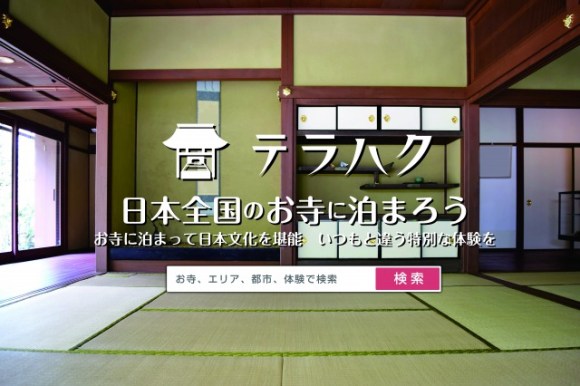
Experiencing life in a Buddhist temple in Japan is about to get a whole lot easier.
For a long time now, several Buddhist temples around Japan have offered accommodation for tourists interested in the aesthetics and lifestyles of these traditional establishments. However, it’s that same traditionalism that has made them relatively difficult to locate and communicate with in the information age.
▼ Don’t hold your breath looking for free wi-fi.
It was also a complicated matter for the temples, since laws made it tricky to use a religious institution as a commercial accommodation. However, with the advent of services like Airbnb, there has been a big push to deregulate this, and it has resulted in the Residential Lodging Business Law that goes into effect on 15 June.
This law will grant temples more freedom in offering their spaces for paying guests, and to further this freedom a new service called Terahaku will also open for business this June. Terahaku is an online search and reservation system devoted to temples all over Japan.
Using this, travelers can easily find, view, and book temples near them from the comfort of their own smartphone or computer.
And if you’re searching from overseas, fear not, because Terahaku will also be working with popular services Booking.com and Airbnb for multi-language support and convenience.
▼ Although more work on their end, you the customer
can use Airbnb just as easily as using Terahaku itself
It is a great idea for tourists, as a temple combines the ambiance of old-world Japan with unique activities like writing out your own Japanese sutras and artwork to make your stay in Japan truly memorable.
Not only that, but an increase in temple visits from both domestic and foreign tourists will also help revitalize rural areas that in some cases desperately need economic activity.
In these final days leading up to Terahaku’s launch, they are currently compiling a list of temples looking to offer their spaces. They expect to have 100 locations available upon launching including the very historical and beautiful Mii-dera (formerly Onjo-ji), near Japan’s largest lake Biwa-ko and the fourth-largest temple in the country.
Throughout their long history in Japan, temples and shrines have survived by adapting to a variety of purposes from schools to mental hospitals. If services like Terahaku continue to grow, we may see yet a new evolution as temples become popular centers of hospitality.

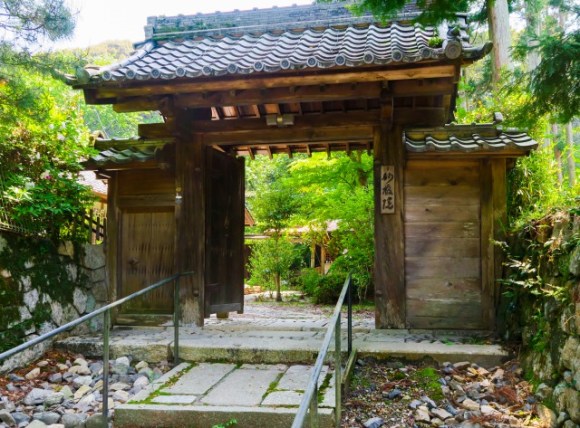
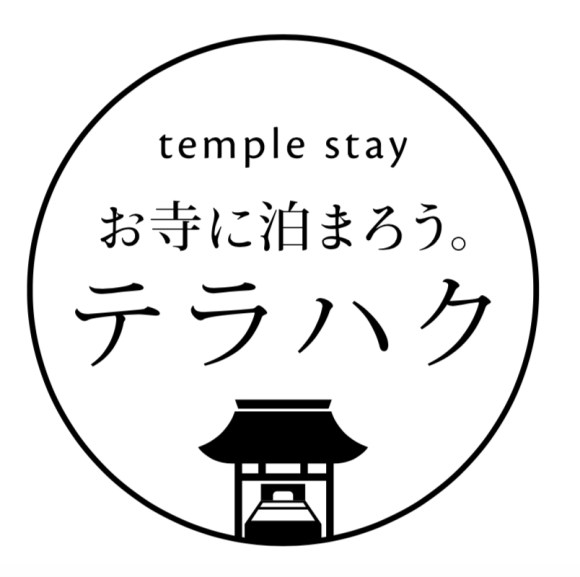
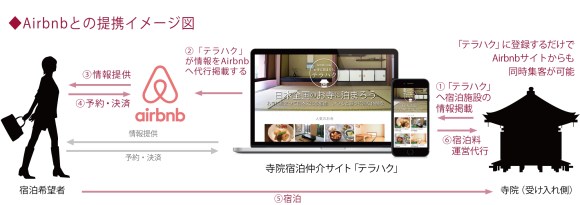
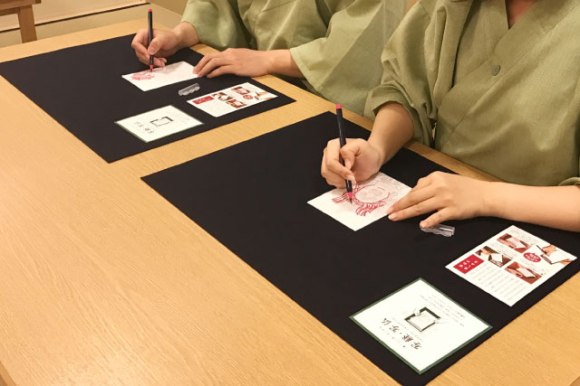
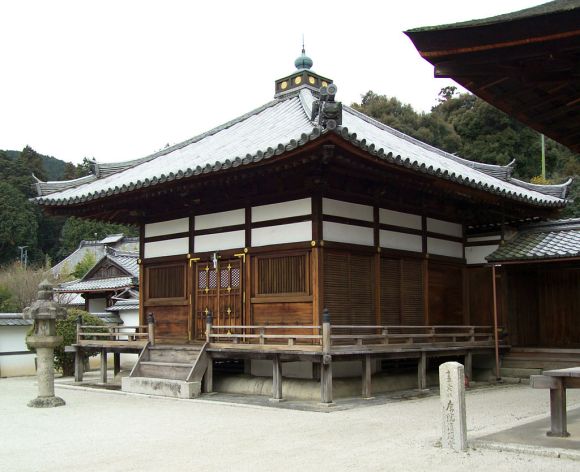
 Seven Airbnb rentals that are perfect for couples, families, and friends vacationing in Japan this summer
Seven Airbnb rentals that are perfect for couples, families, and friends vacationing in Japan this summer Airbnb offers special free stay at a traditional Japanese gassho house in a World Heritage Site
Airbnb offers special free stay at a traditional Japanese gassho house in a World Heritage Site Airbnb listing in Japan reveals travel destination with exclusive use of huge private island
Airbnb listing in Japan reveals travel destination with exclusive use of huge private island Buddhist priest at Japanese temple lodging goes viral for rude responses to tourist’s bad reviews
Buddhist priest at Japanese temple lodging goes viral for rude responses to tourist’s bad reviews Indulge in this sumo, public bath-themed room during your next stay in Tokyo’s Harajuku district
Indulge in this sumo, public bath-themed room during your next stay in Tokyo’s Harajuku district Japanese beef bowl chain Sukiya’s 2026 Smile Box lucky bag basically pays for itself
Japanese beef bowl chain Sukiya’s 2026 Smile Box lucky bag basically pays for itself Hayao Miyazaki says Happy New Year to Studio Ghibli fans with new art for Year of the Horse
Hayao Miyazaki says Happy New Year to Studio Ghibli fans with new art for Year of the Horse Princesses, fruits, and blacksmiths: Study reveals the 30 most unusual family names in Japan
Princesses, fruits, and blacksmiths: Study reveals the 30 most unusual family names in Japan Sumo Sanrio! Hello Kitty and pals team up with Japan Sumo Association for new merch【Pics】
Sumo Sanrio! Hello Kitty and pals team up with Japan Sumo Association for new merch【Pics】 Crotchless Hello Kitty panties coming soon…for smartphones?!?
Crotchless Hello Kitty panties coming soon…for smartphones?!? Japan’s otoshidama tradition of giving kids money at New Year’s gets a social welfare upgrade
Japan’s otoshidama tradition of giving kids money at New Year’s gets a social welfare upgrade Japanese thug wear from Birth Japan perfect for those breaking bad next year
Japanese thug wear from Birth Japan perfect for those breaking bad next year That time Seiji called JASRAC to ask why he didn’t get paid royalties for his song being on TV
That time Seiji called JASRAC to ask why he didn’t get paid royalties for his song being on TV What’s it really like to climb Mt Fuji?
What’s it really like to climb Mt Fuji? 7-Eleven now sells rice burgers in Japan, blurring the line between fast and convenience store food
7-Eleven now sells rice burgers in Japan, blurring the line between fast and convenience store food Starbucks Japan ready to get Year of the Horse started with adorable drinkware and plushies【Pics】
Starbucks Japan ready to get Year of the Horse started with adorable drinkware and plushies【Pics】 7 great places to see Mt. Fuji from without having to climb it
7 great places to see Mt. Fuji from without having to climb it Cyberpunk anime meets traditional culture in Ghost in the Shell gold leaf Japanese changing screens
Cyberpunk anime meets traditional culture in Ghost in the Shell gold leaf Japanese changing screens Hello Kitty Choco Egg figures are an adorable trip through three periods of Japanese pop culture【Pics】
Hello Kitty Choco Egg figures are an adorable trip through three periods of Japanese pop culture【Pics】 We found possibly the quietest Japanese-style hotel in Tokyo’s bustling Shinjuku district
We found possibly the quietest Japanese-style hotel in Tokyo’s bustling Shinjuku district 7-Eleven Japan’s ramen-cooking robot whipped us up a bowl of noodles【Taste test】
7-Eleven Japan’s ramen-cooking robot whipped us up a bowl of noodles【Taste test】 Japan’s oldest largetooth sawfish in captivity back on display in Mie Prefecture
Japan’s oldest largetooth sawfish in captivity back on display in Mie Prefecture More Than a Capsule Stay: Why Solo Travelers Choose “global cabin Yokohama Chinatown”
More Than a Capsule Stay: Why Solo Travelers Choose “global cabin Yokohama Chinatown” 7-Eleven Japan starts new temporary luggage storage service in over 300 branches
7-Eleven Japan starts new temporary luggage storage service in over 300 branches Disillusionment at Tsukiji’s tourist-target prices led us to a great ramen restaurant in Tokyo
Disillusionment at Tsukiji’s tourist-target prices led us to a great ramen restaurant in Tokyo Starbucks teams up with 166-year-old Kyoto doll maker for Year of the Horse decorations【Photos】
Starbucks teams up with 166-year-old Kyoto doll maker for Year of the Horse decorations【Photos】 Tokyo considering law requiring more trash cans following litter increase in heavily touristed area
Tokyo considering law requiring more trash cans following litter increase in heavily touristed area Tokyo’s Tsukiji sushi neighborhood asks tour groups to stay away for the rest of the month
Tokyo’s Tsukiji sushi neighborhood asks tour groups to stay away for the rest of the month Tokyo event lets you travel back in time, for free, to celebrate 100 years since Showa era start
Tokyo event lets you travel back in time, for free, to celebrate 100 years since Showa era start Sanrio theme park in Japan announces plans to expand into a Sanrio resort
Sanrio theme park in Japan announces plans to expand into a Sanrio resort Japan may add Japanese language proficiency, lifestyle classes to permanent foreign resident requirements
Japan may add Japanese language proficiency, lifestyle classes to permanent foreign resident requirements Stamina-destroying “Paralysis Noodles” are Tokyo’s newest over-the-top ramen innovation
Stamina-destroying “Paralysis Noodles” are Tokyo’s newest over-the-top ramen innovation Survey asks foreign tourists what bothered them in Japan, more than half gave same answer
Survey asks foreign tourists what bothered them in Japan, more than half gave same answer Japan’s human washing machines will go on sale to general public, demos to be held in Tokyo
Japan’s human washing machines will go on sale to general public, demos to be held in Tokyo Japan’s deadliest food claims more victims, but why do people keep eating it for New Year’s?
Japan’s deadliest food claims more victims, but why do people keep eating it for New Year’s? We deeply regret going into this tunnel on our walk in the mountains of Japan
We deeply regret going into this tunnel on our walk in the mountains of Japan Studio Ghibli releases Kodama forest spirits from Princess Mononoke to light up your home
Studio Ghibli releases Kodama forest spirits from Princess Mononoke to light up your home Major Japanese hotel chain says reservations via overseas booking sites may not be valid
Major Japanese hotel chain says reservations via overseas booking sites may not be valid Put sesame oil in your coffee? Japanese maker says it’s the best way to start your day【Taste test】
Put sesame oil in your coffee? Japanese maker says it’s the best way to start your day【Taste test】 No more using real katana for tourism activities, Japan’s National Police Agency says
No more using real katana for tourism activities, Japan’s National Police Agency says Starbucks Japan reveals new sakura drinkware collection, inspired by evening cherry blossoms
Starbucks Japan reveals new sakura drinkware collection, inspired by evening cherry blossoms Updated cherry blossom forecast shows extra-long sakura season for Japan this year
Updated cherry blossom forecast shows extra-long sakura season for Japan this year Tera Ango now offers the chance to live and take part in daily practices at a Buddhist temple
Tera Ango now offers the chance to live and take part in daily practices at a Buddhist temple Japanese government recommends changing Buddhist temple mark on maps to avoid Nazi connotations
Japanese government recommends changing Buddhist temple mark on maps to avoid Nazi connotations Crowdfunding campaign for Nara World Heritage temple surpasses 100 million yen in 8 days
Crowdfunding campaign for Nara World Heritage temple surpasses 100 million yen in 8 days 1,032 statues, and one thing too many people miss, at this Kyoto temple
1,032 statues, and one thing too many people miss, at this Kyoto temple 200,000 yen-per-night Airbnb is the successor to Tokyo’s famous Nakagin capsule apartments【Pics】
200,000 yen-per-night Airbnb is the successor to Tokyo’s famous Nakagin capsule apartments【Pics】 Stay at the Nara Juvenile Prison hotel in Japan in 2020
Stay at the Nara Juvenile Prison hotel in Japan in 2020 Temple camping in Japan at Wakayama’s Daitaiji【Photos】
Temple camping in Japan at Wakayama’s Daitaiji【Photos】 Millennium-old Japanese temple offering funeral service for broken record player needles
Millennium-old Japanese temple offering funeral service for broken record player needles Temple-heavy Kyoto presenting a unique challenge for travelers looking for Muslim prayer rooms
Temple-heavy Kyoto presenting a unique challenge for travelers looking for Muslim prayer rooms Tomaya: The old Japanese inn that only accepts reservations by post
Tomaya: The old Japanese inn that only accepts reservations by post Mongolian woman arrested on charges of pickpocketing foreign tourist at Tokyo’s most famous temple
Mongolian woman arrested on charges of pickpocketing foreign tourist at Tokyo’s most famous temple A nearly 400-year-old Kyoto temple ordinarily closed to public is accepting visitors this summer
A nearly 400-year-old Kyoto temple ordinarily closed to public is accepting visitors this summer TV program claims Japanese temple banned cats for being too cute, Japan nods in agreement
TV program claims Japanese temple banned cats for being too cute, Japan nods in agreement Mysterious “Bra Temple” makes news around Japan
Mysterious “Bra Temple” makes news around Japan Kyoto temple suffering from littering tourists claiming not to understand Japanese verbal warning
Kyoto temple suffering from littering tourists claiming not to understand Japanese verbal warning TripAdvisor Japan announces the country’s 10 favorite shrines and temples
TripAdvisor Japan announces the country’s 10 favorite shrines and temples
Leave a Reply